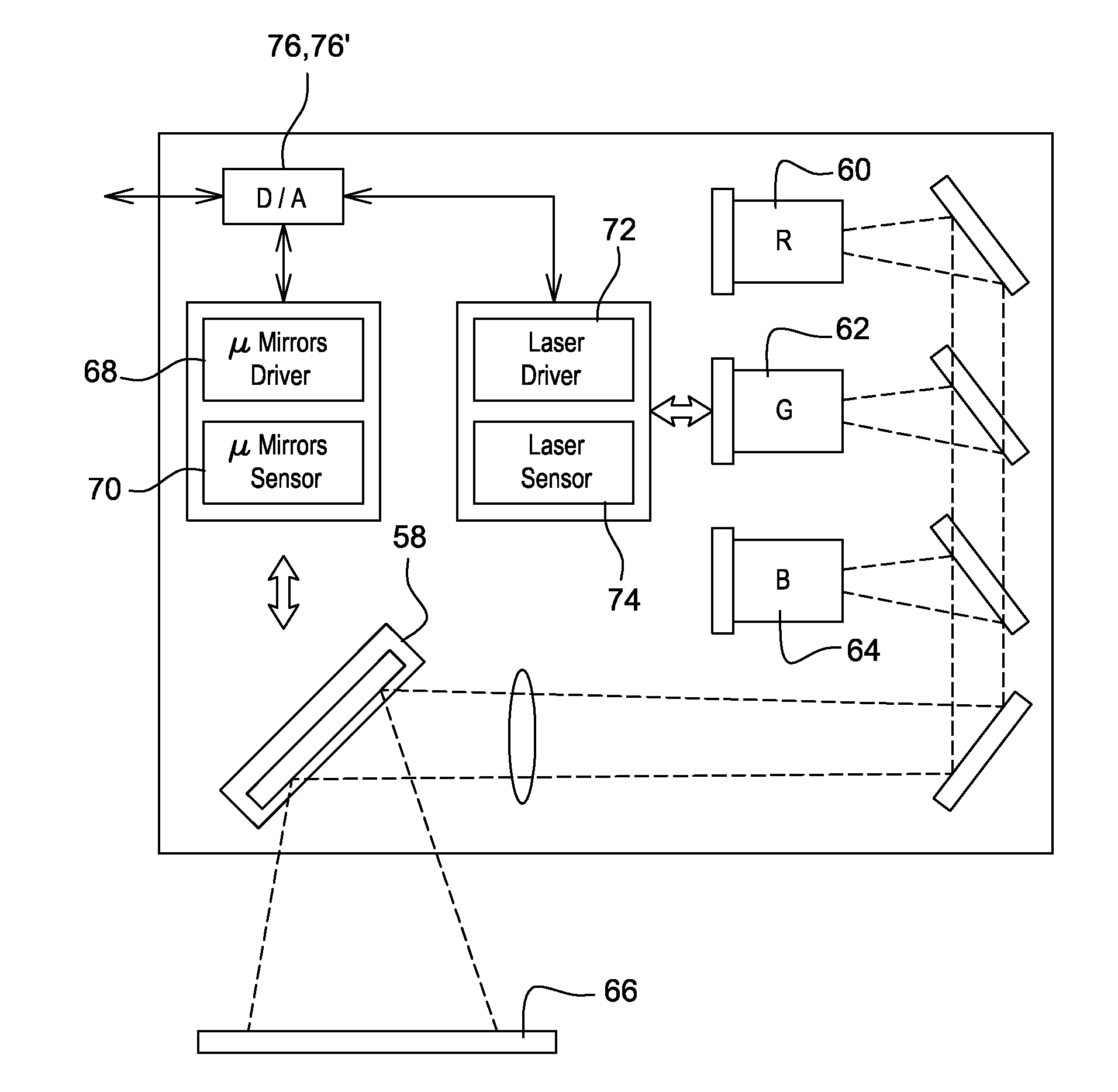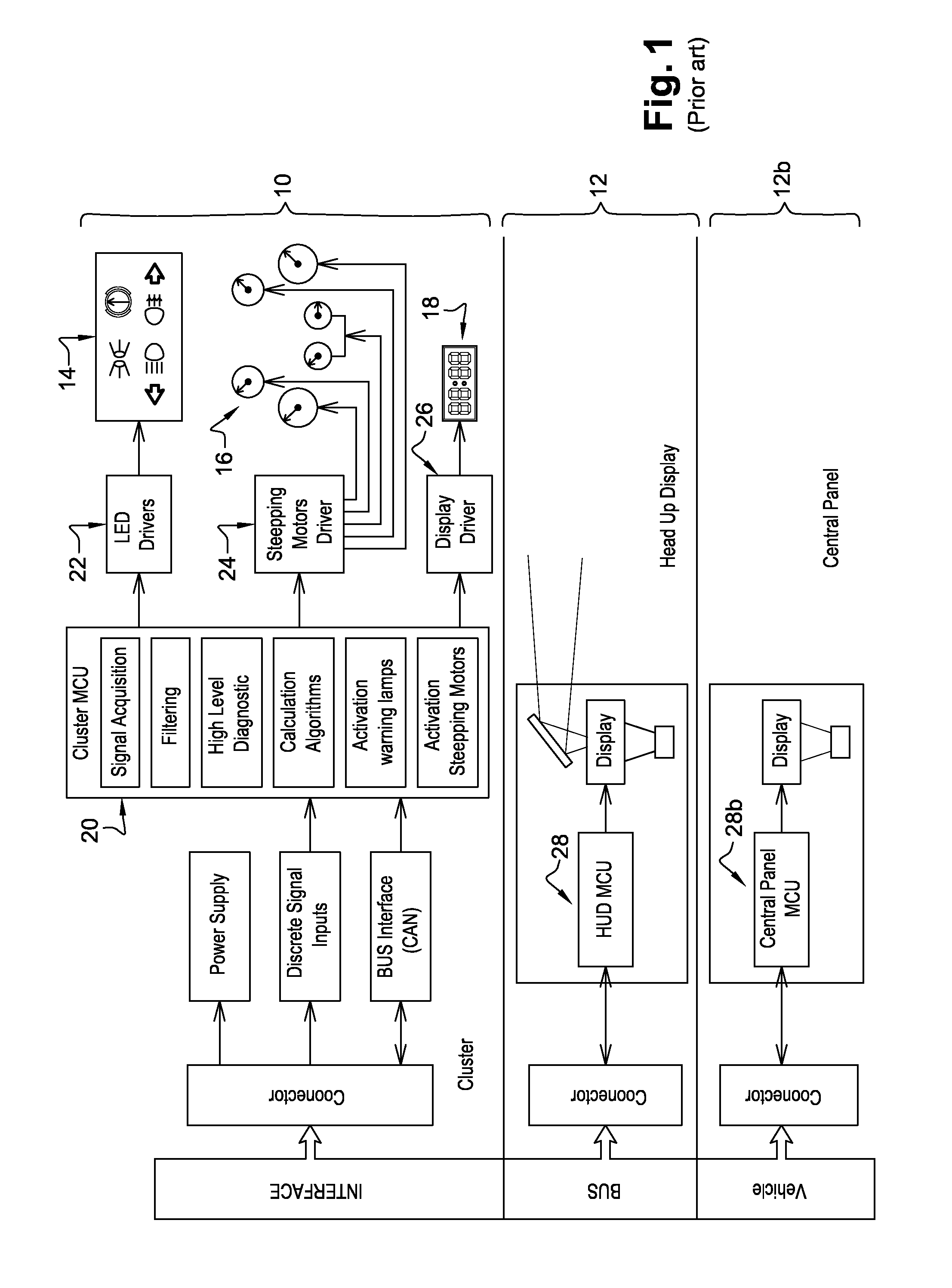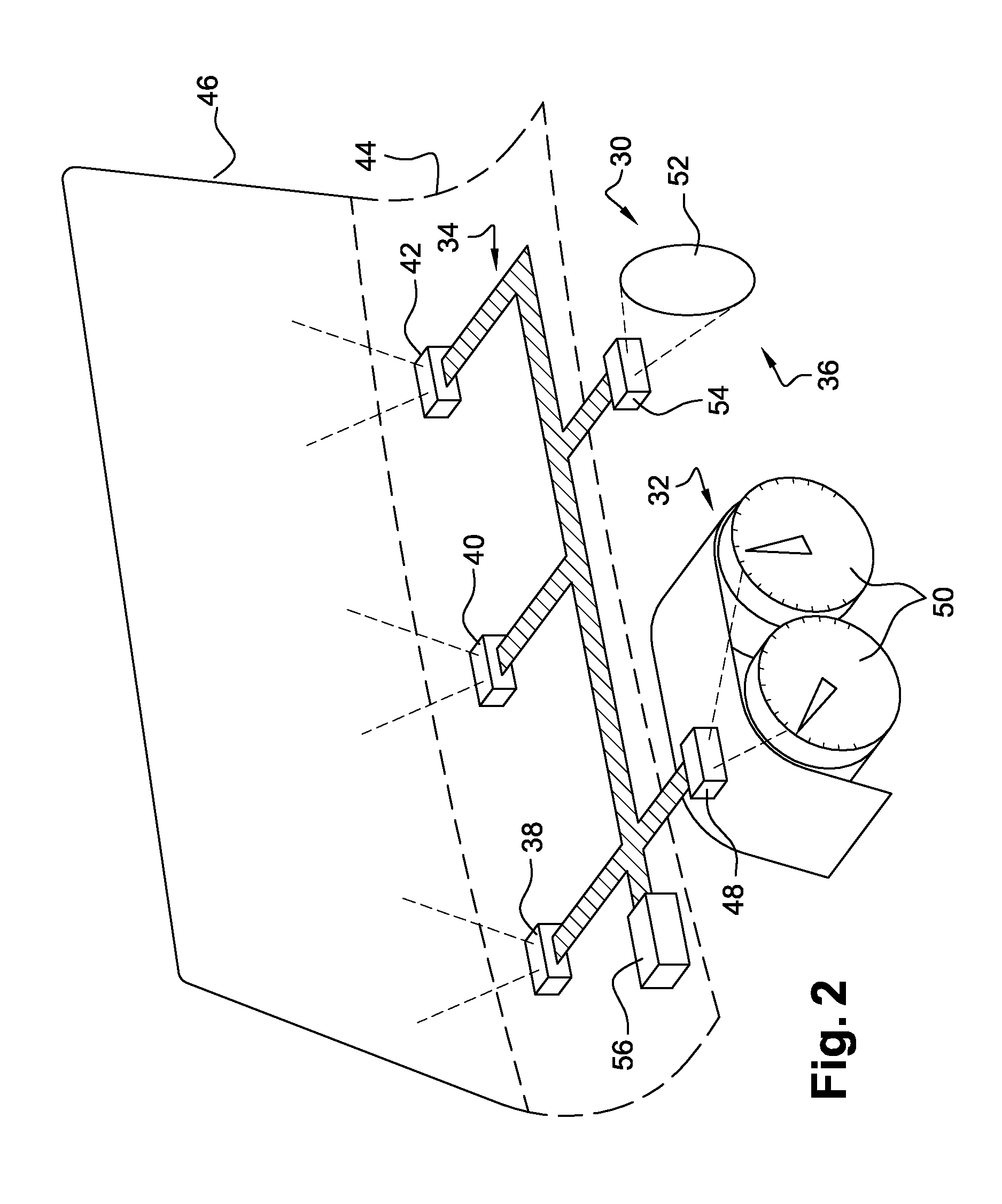Human machine interface for an automotive vehicle
a human machine and vehicle technology, applied in static indicating devices, instruments, transportation and packaging, etc., can solve the problems of limiting the quantity of information to be displayed, the complexity of vehicle electronics has significantly increased, and the information displayed by conventional head-up displays can only be seen by the driver, so as to achieve a comparatively easy adaptation effect for different situations
- Summary
- Abstract
- Description
- Claims
- Application Information
AI Technical Summary
Benefits of technology
Problems solved by technology
Method used
Image
Examples
Embodiment Construction
[0029]The architecture of conventional instruments used to achieve a human-machine interface in an automotive vehicle is illustrated FIG. 1. The HMI generally comprises three mutually independent instruments: an instrument cluster 10, a head-up display 12 and a center console 12b. The instrument cluster comprises a main control unit 20, warning lamps 14, analog gauges 16 and a segment LCD 18 for conveying information to a vehicle driver. The instrument cluster also includes different electronic driving circuits 22, 24 for the display devices. The main control unit 20 carries out the signal acquisition, the filtering of the signals and it computes the information to be displayed to the vehicle driver. The head up display 12 contains a similar main control unit 28. Also, the center console comprises a main control unit 28b. Each of the three instruments acquires the information to be displayed from the vehicle bus interface (Controller Area Network) and carries out calculations indivi...
PUM
 Login to View More
Login to View More Abstract
Description
Claims
Application Information
 Login to View More
Login to View More - R&D
- Intellectual Property
- Life Sciences
- Materials
- Tech Scout
- Unparalleled Data Quality
- Higher Quality Content
- 60% Fewer Hallucinations
Browse by: Latest US Patents, China's latest patents, Technical Efficacy Thesaurus, Application Domain, Technology Topic, Popular Technical Reports.
© 2025 PatSnap. All rights reserved.Legal|Privacy policy|Modern Slavery Act Transparency Statement|Sitemap|About US| Contact US: help@patsnap.com



